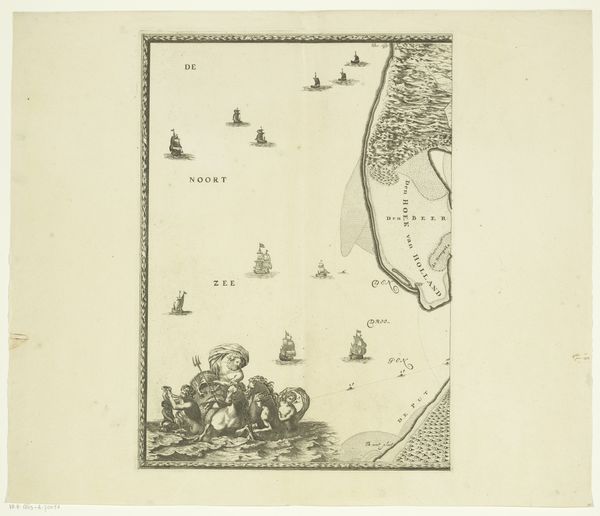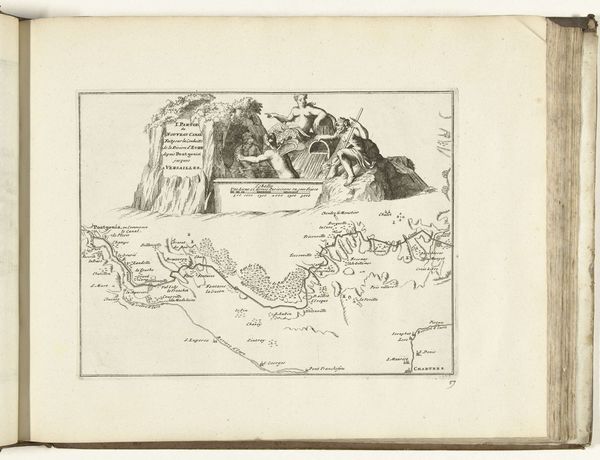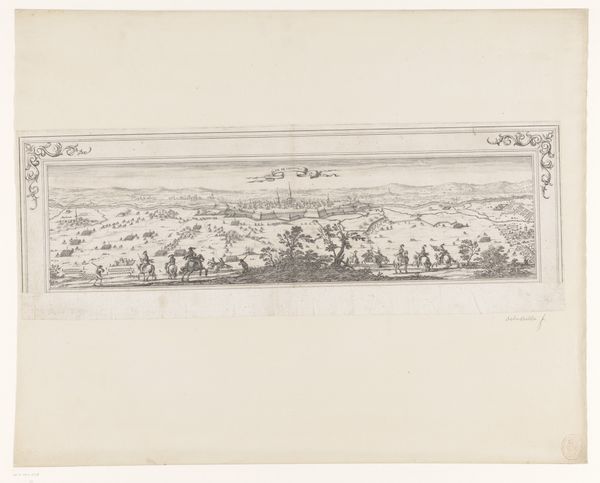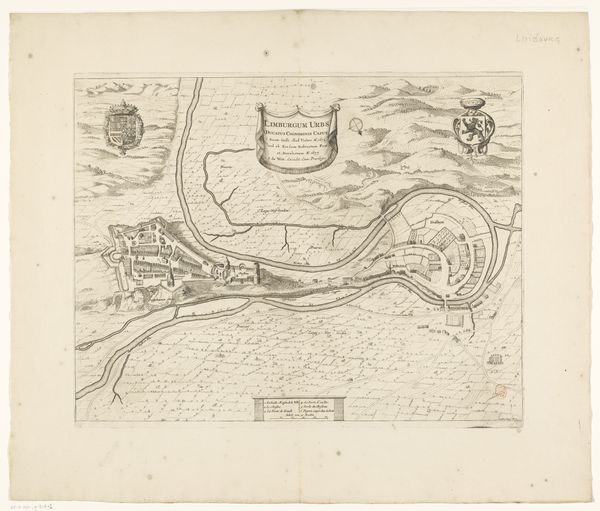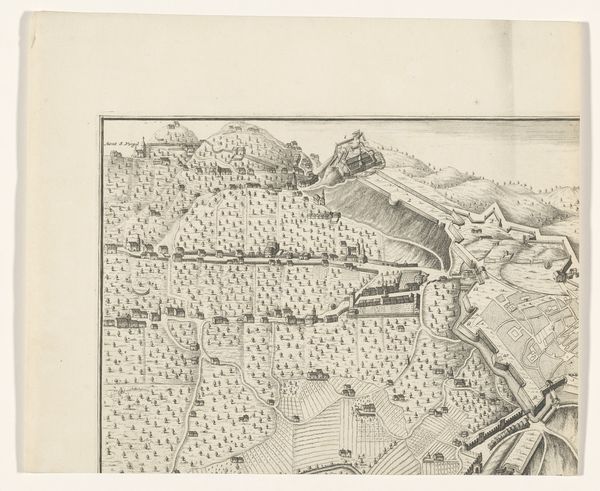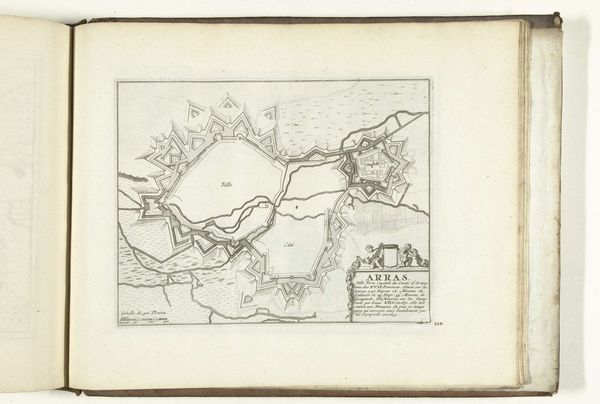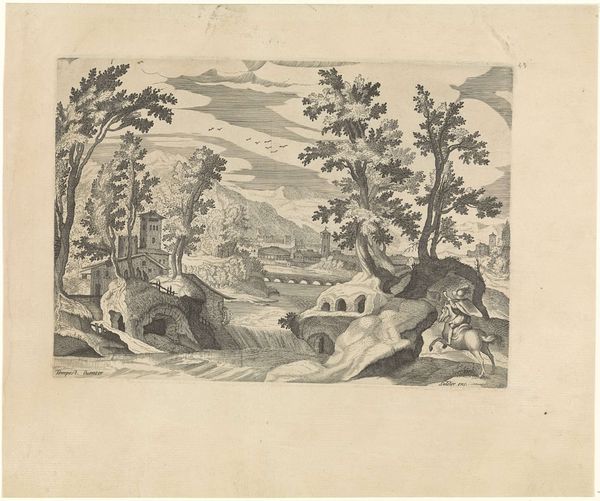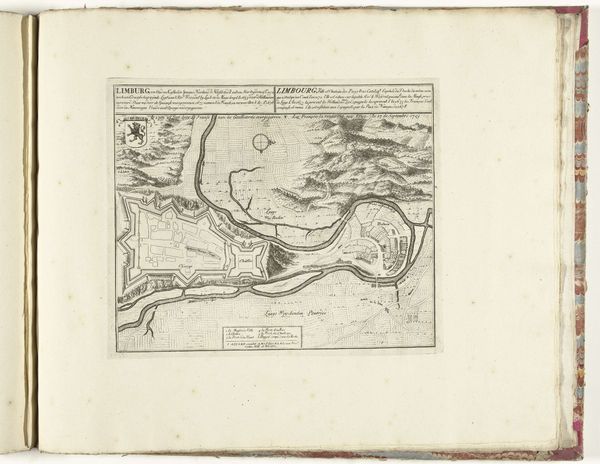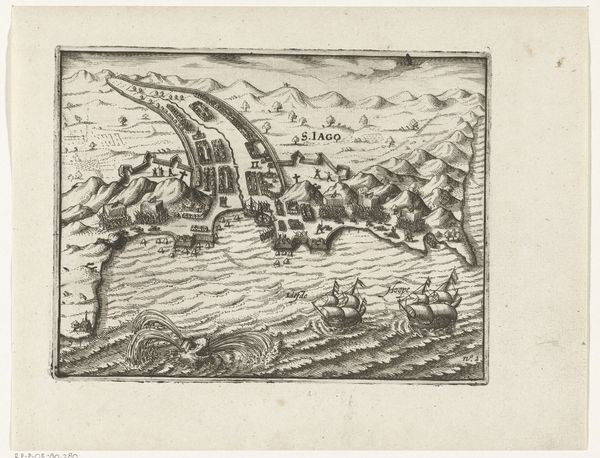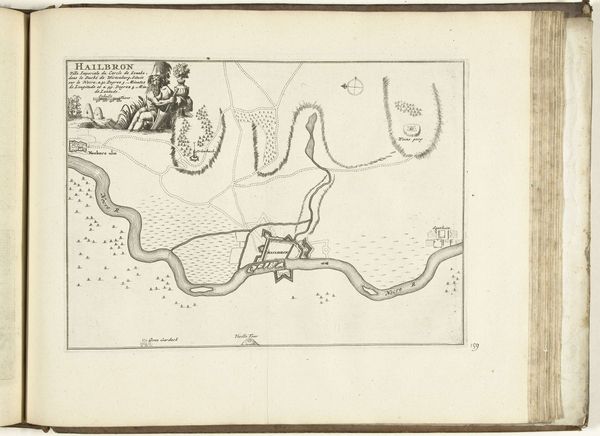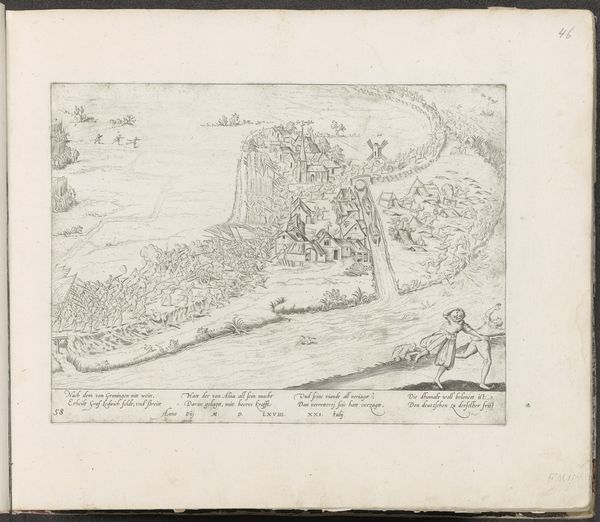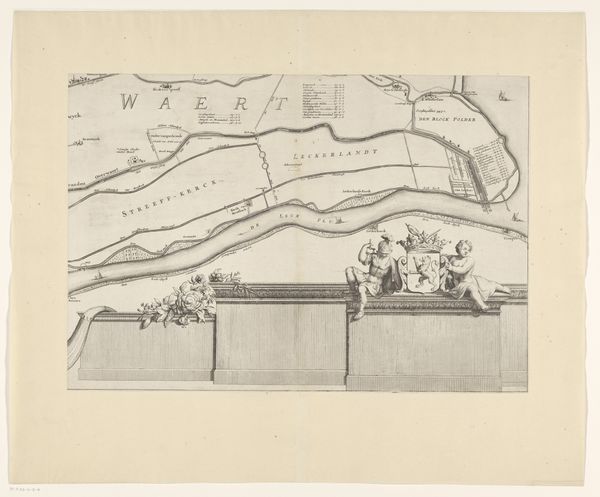
drawing, print, etching, ink
#
drawing
#
ink drawing
#
narrative-art
#
dutch-golden-age
# print
#
etching
#
landscape
#
ink
#
geometric
#
cityscape
Dimensions: width 560 mm, height 385 mm
Copyright: Rijks Museum: Open Domain
Curator: This intricate etching, crafted after 1666 by Joost van Geel, is titled "Kaart van de Maasmonding met postroutes," depicting a map of the Maas estuary alongside postal routes. It's fascinating to consider the labor and logistics embedded within this seemingly simple document. Editor: It’s striking. The lines, so fine and deliberate, render a world in miniature. I’m drawn to the geometric precision juxtaposed with the lively ships scattered across the waterway. Curator: Precisely. Van Geel worked within a complex system of patronage and printmaking. Each ship, each carefully rendered line, speaks to the social need for trade and communication, underpinned by the skilled labour of craftsmen. Notice how the depiction of postal routes highlights the Dutch Republic's advanced infrastructure and mercantile ambitions. Editor: The contrast between the structured map and those cherubic figures holding the title plaque is visually arresting. What purpose do you think they served, stylistically or otherwise? Their positioning reminds me of Baroque embellishments within a predominantly practical framework. Curator: Well, I find their presence illustrative of a tension, revealing how the art world often overlays craft with ornament. Here, putti elevate functional cartography into something worthy of artistic admiration. They signify the labor and economic systems the map embodies and their transformation into something of high value. Editor: Perhaps. To my eye, it's about balance. They seem to serve more to elevate the aesthetic of the etching itself, transforming it from mere document to an art object worthy of contemplation. The material conditions of production are apparent, but so is the artistry and intention behind the rendering. Curator: A keen insight. But without understanding the print's role within 17th-century Dutch society – the skilled labor, the systems of postal networks, the commercial imperative – do we really grasp its full significance? Its aesthetic design also obscures power structures inherent within its production. Editor: Point taken, of course the social context informs and enriches our experience. However, isolating the art object and considering how elements such as scale and precision generate meaning should also be central to understanding the work. Thank you, I am changed. Curator: I'm glad that you enjoyed it; I see our appreciation of the etching’s visual design allows us to remember the tangible processes that define art.
Comments
No comments
Be the first to comment and join the conversation on the ultimate creative platform.
